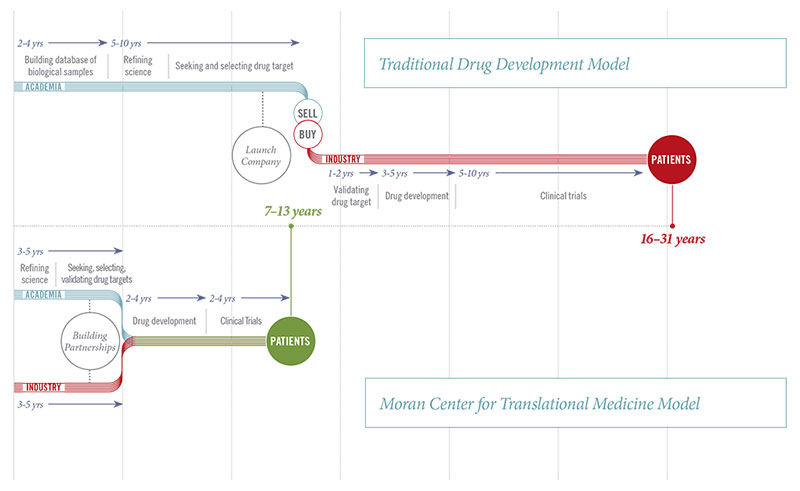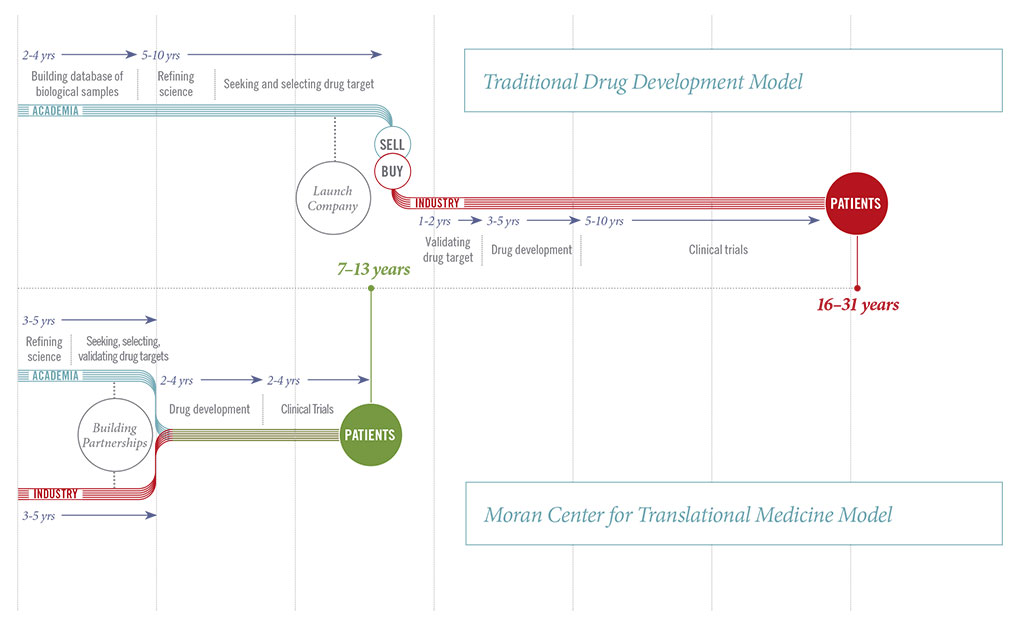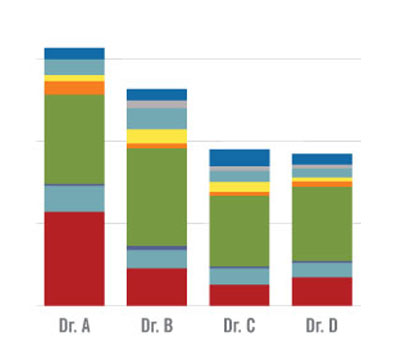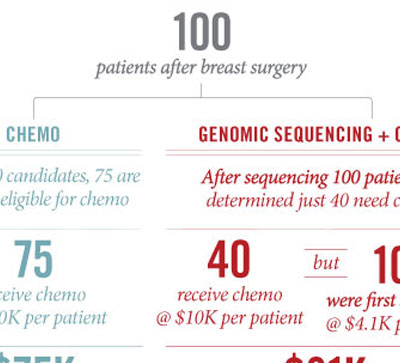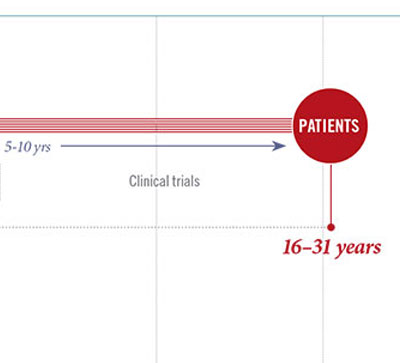Fueling Discovery: A tale of two models
Cure macular degeneration. Plain and simple. That’s how Gregory Hageman, Ph.D., professor of ophthalmology and visual sciences, describes his lifetime goal. Hageman has already discovered many genes associated with age-related macular degeneration (AMD), and over the past 20 years, he has built the largest collection of eyes – roughly 6,500 at last count – donated by people from all over the world. “Most people agree that Hageman has the biggest and broadest vision of AMD today,” says Randall J Olson, M.D., chair of ophthalmology and visual sciences.
If Hageman’s focus and vision for discovery is crystal clear, his patience for traditional academic funding models has long worn thin. At 60 years old, Hageman isn’t interested in spending the next 25 years taking a discovery from the lab to patient care. Neither is Olson.
DISCOVERY IS WHAT CHANGES THE WORLD. WE NEED TO FIND A NEW MODEL TO FUND IT.RANDALL J OLSON, M.D. CEO, John A. Moran Eye Center Chair, Department of Ophthalmology and Visual Sciences
“Discovery is what changes the world,” says Olson, CEO of the John A. Moran Eye Center. “We need to find a new model to fund it.” He feels the current funding system is broken and inefficient, rewarding conservatism instead of risk-taking, individuals instead of teams, publishing instead of producing. So when Hageman arrived in Utah with his semitrailer full of donor eyes, and an ambitious dream to cure macular degeneration, Olson told him to, “focus on the science, and I’ll work with you to raise the money.”
Hageman and Olson have created a solution to the traditional academic funding model called the Center for Translational Medicine (CTM). Under Hageman’s leadership, CTM is designed to fuel faster and less expensive discovery by strategically partnering with private industry early on. While academia has traditionally been cautious about such collaborations, Olson and Hageman have embraced such partnerships as the way to the future. “Industry has deep pockets and resources academia couldn’t dream of, and we have magic pieces of the puzzle,” says Hageman, referring in his case to donor eyes, patients, brilliant faculty and the Utah Population Database. The key is to set up a win-win partnership where everything is transparent, the science is squeaky clean, incentives are aligned, funding is based on reaching milestones and everyone is racing toward a singular goal: to get new treatments to patients.
To find that cure for AMD patients, Moran has set up a partnership with the pharmaceutical company Allergan. “Finally we have the resources to run as hard and as fast as we can toward one goal – to get a product out the door,” says Hageman. “We have access to brilliant people on both sides of the fence. I’ve always wanted to say that I couldn’t keep up with my team. And I’m there. I’m so there.”
